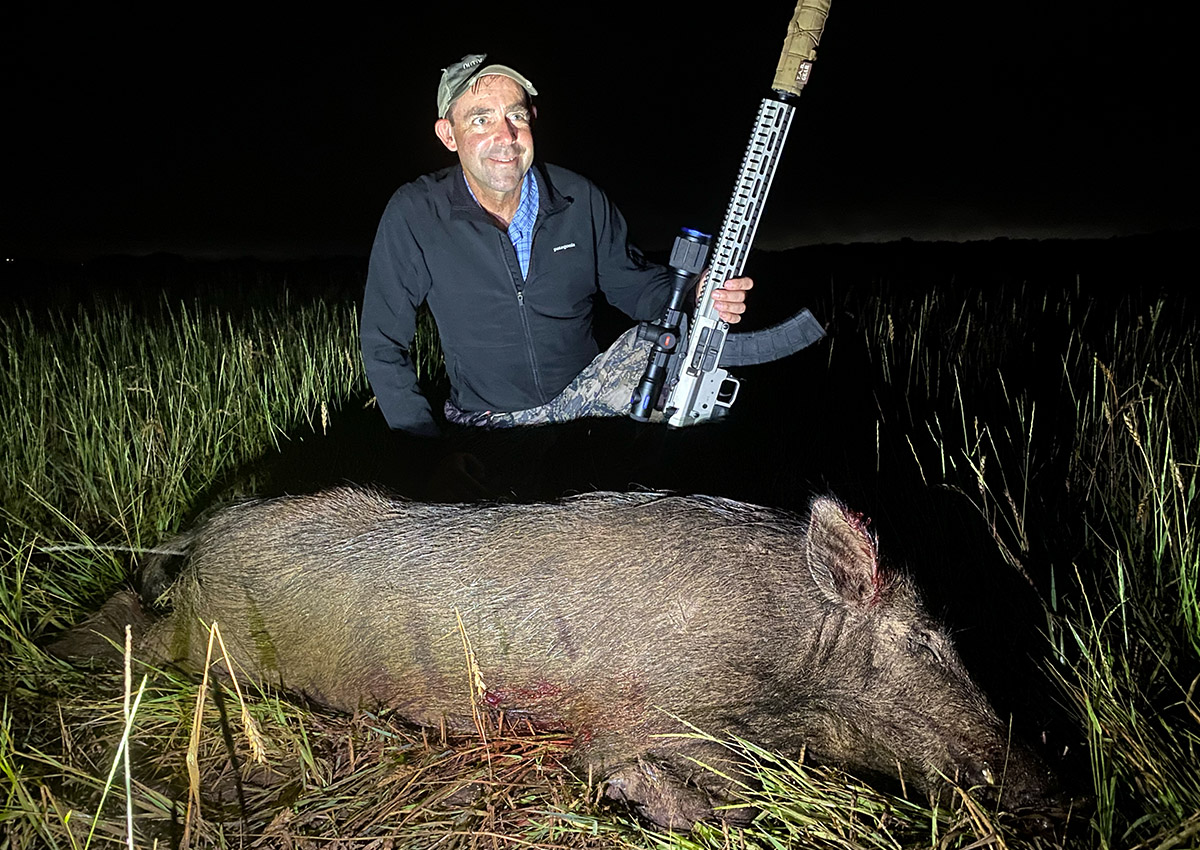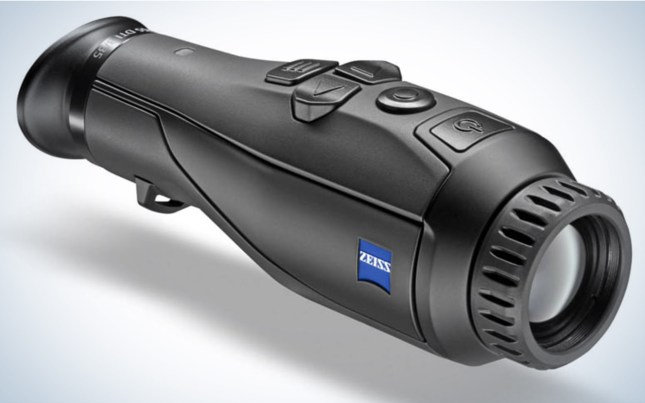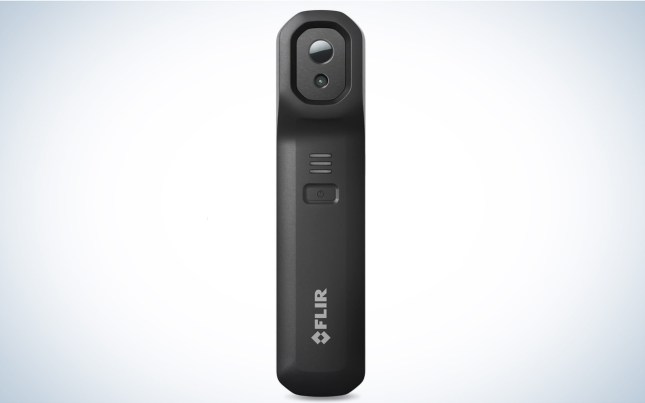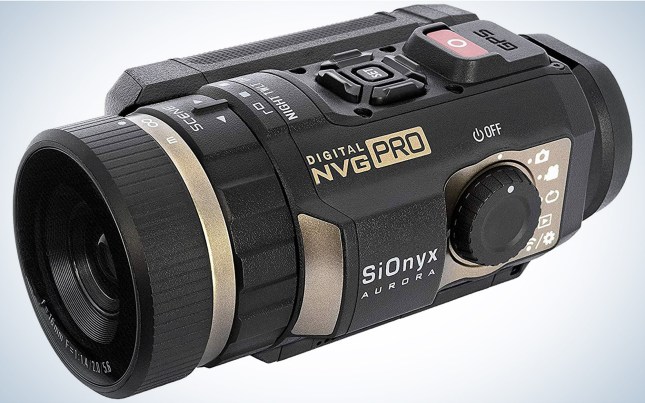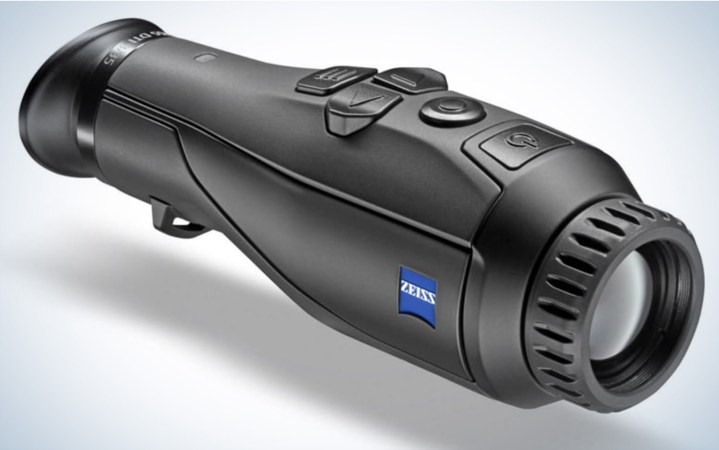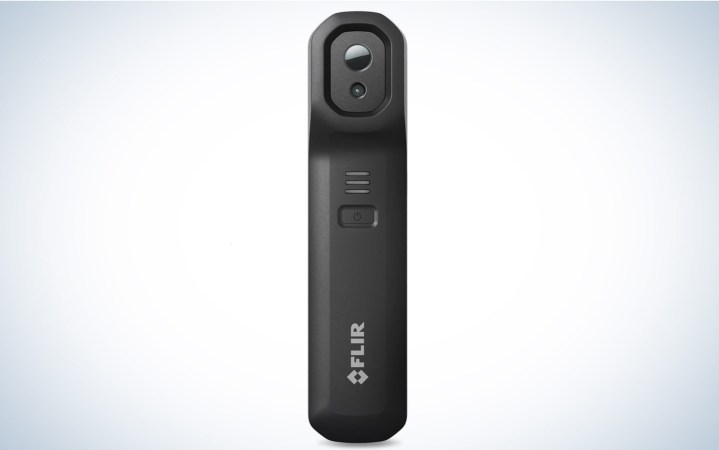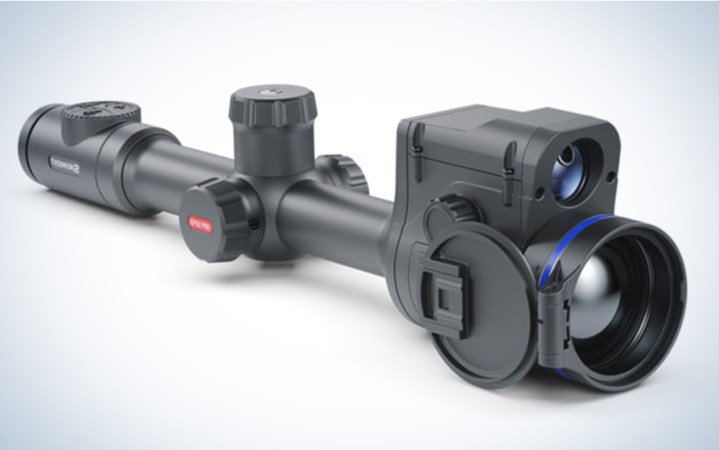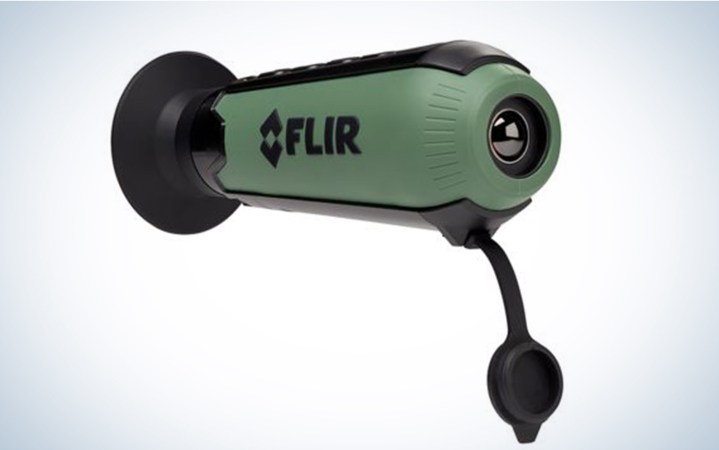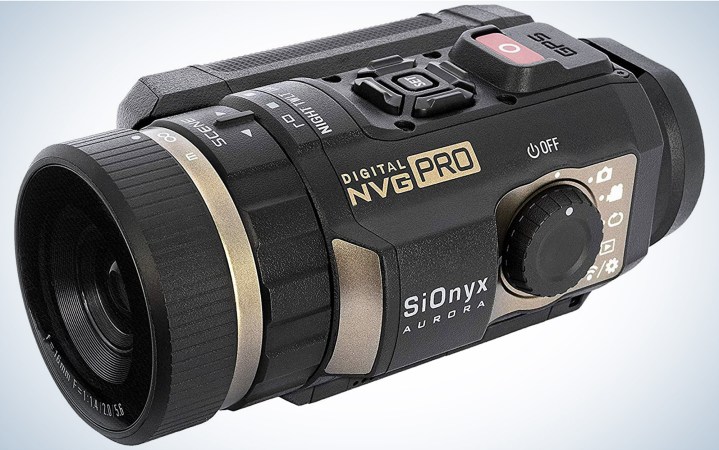We may earn revenue from the products available on this page and participate in affiliate programs. Learn More ›
Thermal cameras, monoculars, and scopes are cheating. I don’t know a plainer way to declare my opposition to devices that could allow us to bypass legal hunting hours. But, as long as this new class of “optics” isn’t used to pursue game animals or to deprive fellow citizens of their liberties, I can’t deny its virtues. Thermal cameras have allowed me to find newborn calves in a deadly blizzard, find my ice-fishing buddies in the fog, detect hidden electrical problems that might burn my house down, and finally even the odds on crop-raiding feral hogs.
The electronic optics can be mounted on rifles, or held in the hand and used as a sort of flashlight, or some combination of the two. Despite my objections to their fair-chase failings, these products are game-changing devices for finding wounded or lost animals (to include humans) and for hunting nocturnal non-game animals like coyotes, pigs, and raccoons.
And they’re undeniably cool as hell. These devices allow humans to achieve a shared goal of our ancestors: the ability to see in the dark. Importantly, these products not only see through the night, but also behind walls, through veiling branches, can even detect the presence of things that are no longer there like a warm spot left by a departed animal, or heat leaks in your house.
I tested various classes of thermal cameras from rifle scopes that record your hunt to adapters that turn your phone into a thermal device. Here’s a breakdown of the best thermal cameras.
- Best Overall: Zeiss DTI 3/35
- Best Phone-Connected Thermal: FLIR ONE Edge Pro
- Best Scope for Video: Pulsar Thermion 2 LRF PRO
- Best Budget Monocular: FLIR Scout TK
- Best Night Vision Camera: Sionyx Aurora
How I Tested the Best Thermal Cameras
The field includes brand-new units that are just hitting the market this spring, others that I’ve had from last year’s testing, and a few oddballs. My intention wasn’t to test every unit on the market, but rather handle a representative sample of products in order to provide a performance baseline. I started by measuring attributes, assessing how far each unit could effectively detect a standard chemical hand-heater in the dark. I then used each unit on midnight-shift rounds of a calving operation. This is one of the surprisingly handy uses of thermal units: They can detect cows that often separate from the herd to give birth, and on a couple occasions the thermals allowed me to find newborn calves that, left undetected and unsheltered, might have died in winter weather. I also used the thermals on a series of sub-zero winter coyote hunts, both to test their capabilities in the field and to assess how their batteries would hold up to extreme cold.
I also assessed each unit’s imagery, both the type and utility of the palettes available and the resolution of the images. I assessed each unit’s ease of use and ergonomics.
I used the Sionyx Aurora Pro camera through the fall, filming Outdoor Life’s benchmark optics test and on various outings. Because I had only one night-vision product, a digital night-vision monocular from Sionyx, I adapted methodologies that I used for the thermals, checking calves, hunting coyotes, and measuring its reach and range.
Best Overall: Zeiss DTI 3/35
Key Features
- Standard palettes: white hot, black hot, red hot, rainbow
- 1-4x magnification
- Manual focus
- Eyepiece diopter
- 1,300-yard range
- 384 x 288 sensor resolution
- 1280 x 960 display resolution
- 35mm objective
- Records video
Pros
- Intuitive operation
- Nine hour battery life
- Great resolution
Cons
- Pricey
- Manual focus
Zeiss entered the world of thermal imaging a few years ago, and this handy, simple hand-held unit is a happy marriage of the company’s optical heritage and electronics capability. There’s nothing fancy about this—it doesn’t have a rangefinder or a reticle—but it offers good resolution in a durable and intuitive package.
The 35mm objective is the DTI’s strongest attribute. That’s a fair amount of germanium crystal for a hand-held unit and it provides very good resolution. The four palettes are simple and useful for a wide range of viewing, though I found myself sticking to either white hot or black hot for most of my field work. It has a simple still and video capture mode, and has wireless transmission capability. And the battery life was among the best in this roundup. I managed to get nine hours of continuous run time in moderate temperatures, and up to a month of power with intermittent use.
At about $3,000, this is a fairly expensive thermal unit, especially considering its fairly limited utility. Its manual focus is fairly touchy, meaning you may have to constantly fine-tune focus to keep images sharp.
Best Phone-Connected Thermal: FLIR ONE Edge Pro
Key Features
- Thermal camera connects wirelessly to a smart device
- Eight color palettes (white hot, hottest, coldest, iron, contrast, arctic, lava, color wheel)
- Measuring function
- Image Modes: Infrared, visual, measuring
- Thermal Resolution: 160 x 120
- Visual Resolution: 640 x 480
- Image capture capability via phone app
- Bluetooth and Wi-Fi connectivity
- Camera can be clipped to a phone or used as a remote image sensor
Pros
- Light at 5.4 ounces
- Can be used for a variety of outdoor and home improvement applications
- Excellent features for finding thermal leaks
Cons
- Limited range
- Not as detailed as more expensive handheld units
This might be the coolest device of the year. It’s a thermal camera with no on-board controls or display. Instead, it turns your phone into a thermal device, and allows you to take photos, record video, and then upload content directly to the cloud or to the distribution network of your choice.
Note that this isn’t the first thermal that’s piggybacked on a smart phone. Seek Thermal’s Compact series has converted phones into thermal display screens for several years, and the baseline unit, which features 10 color palettes, a 206 x 156 thermal sensor, and both photo and video capability, remains a great consumer-level thermal.
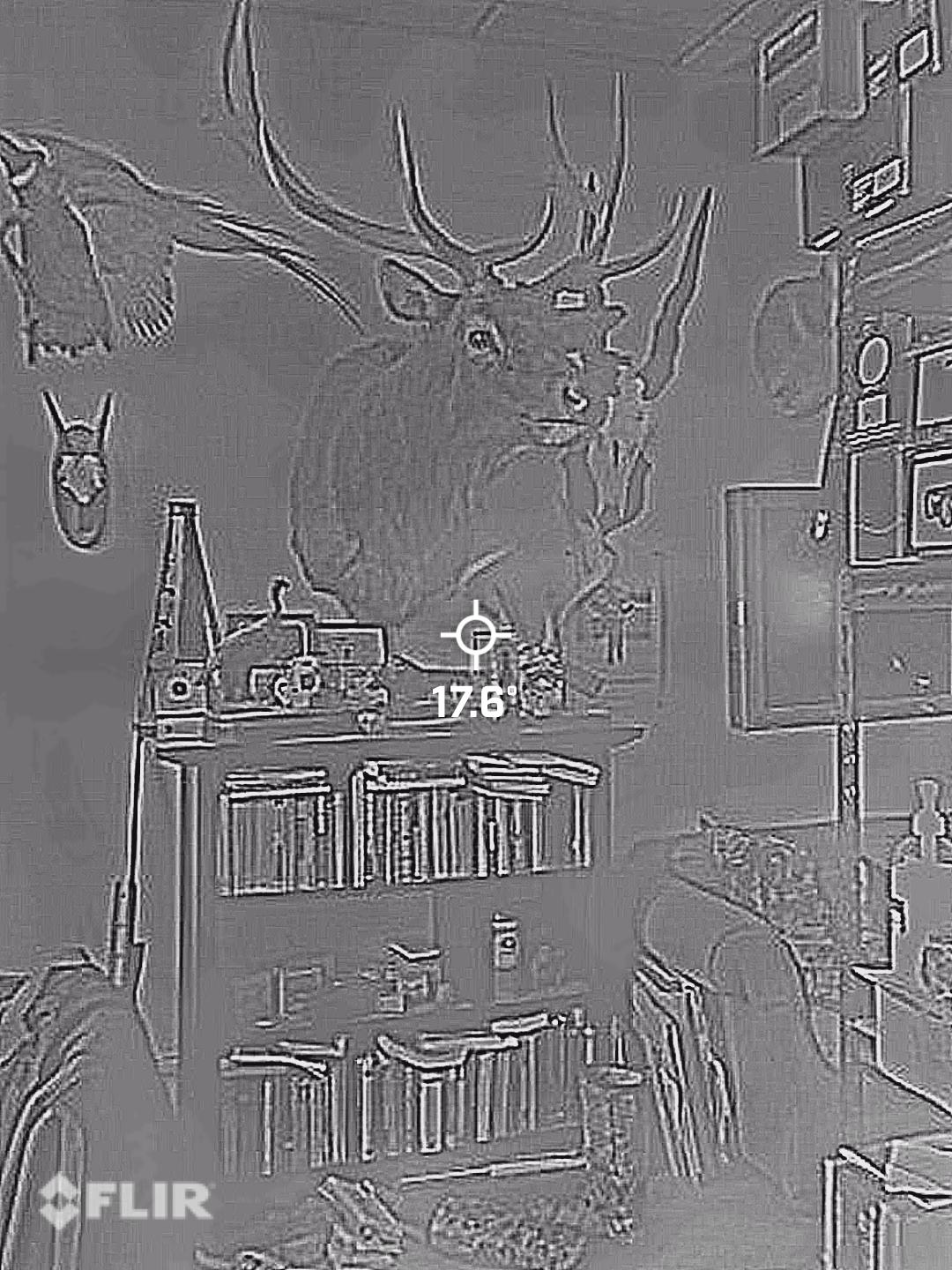
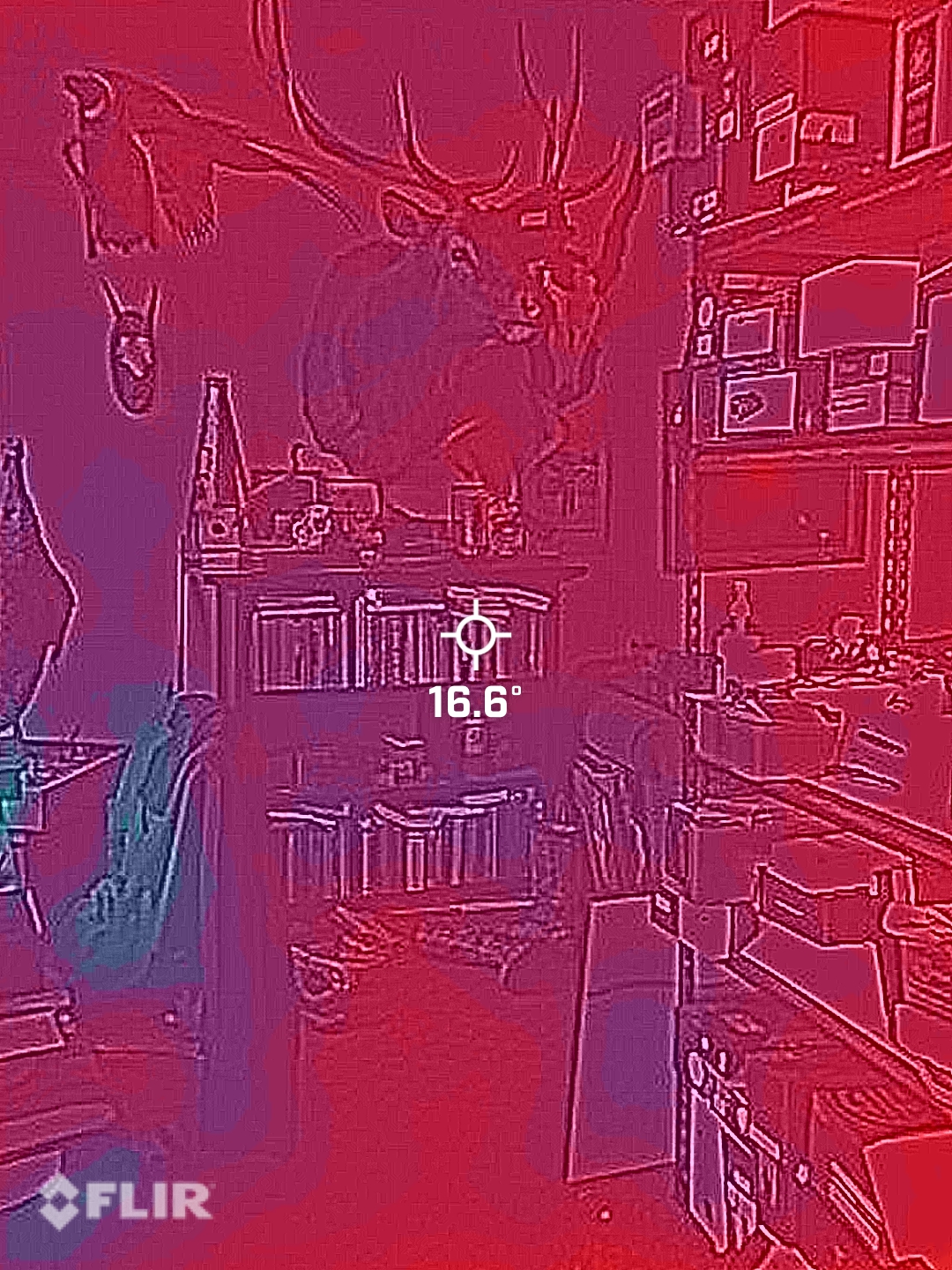
While not strictly an outdoors unit, the ONE Edge Pro would make a handy tracking aid, or a useful device to inspect that strange noise outside (or even inside) your tent. It has even more relevant uses around your house, to detect poorly sealed windows or spots where warm air is escaping from heating ducts. It can be used as a stud detector to find 2 x 4s behind the drywall. It has remarkably sophisticated “emissivity” talents, a fancy word for finding thermal leaks, and its spot meter can detect hottest and coldest points, plus a 3-spot measurement that can be compared with other detections to determine thermal efficiencies. It has all the palette modes you would want, plus a cool wire-frame mode that finds the angles and outlines of buildings and rooms, turning them into a sort of thermal blueprint.
It’s a slender unit, weighing just 5.4 ounces and sized to slip into a pocket. It can be deployed up to 5 meters away from its companion phone and still transmit readings via Bluetooth and Wi-Fi, or it can piggyback on your phone with its expandable clip. The phone app is easy to navigate, and fun to use. At $549, it’s not a frivolous purchase, but that’s a reasonable price for turning your phone into a thermal detector, especially one that could save you hundreds of dollars in energy efficiencies.
Sophisticated thermal users will be disappointed in the range, resolution, and sensitivity of the FLIR ONE. It’s definitely on the consumer side of the ledger, with limited capabilities in outdoors settings. The thermal resolution is about a third that of most hand-held thermal viewers, and the refresh rate is a little slow. The lack of an on-board display might be problematic for some, but by turning your phone into a display unit, the ONE Edge Pro makes image sharing a breeze.
Best Scope for Video: Pulsar Thermion 2 LRF PRO
Key Features
- Capable of detecting heat signatures out to 2,000 yards
- Built-in laser rangefinder has a stated range of 875 yards, and effective range of about 500 yards
- Built in ballistic calculator
- 2-16-power magnification range
- Built-in photo and video recording, which can be stored on 16GB memory or streamed via on-board Wi-Fi to mobile app
- 10 digital reticles
- Nine different color palettes
Pros
- Tons of useful features
- Long detection range
- Excellent resolution and detail
- Intuitive ergonomics
Cons
- Limited inventory (currently)
- Refresh rate could be faster
In terms of products available on the civilian market, this rangefinding rifle scope has the best combination of range, detection sensitivity, ease of use, and ample mounting dimensions. It’s also among the more durable units, and its combination of on-board and removable batteries is a key asset to keep it cranking in cold weather. Its data-capture-and-share capability is impressive. It has the ability to record both photos and videos, and then share to a mobile app via its built-in Wi-Fi.
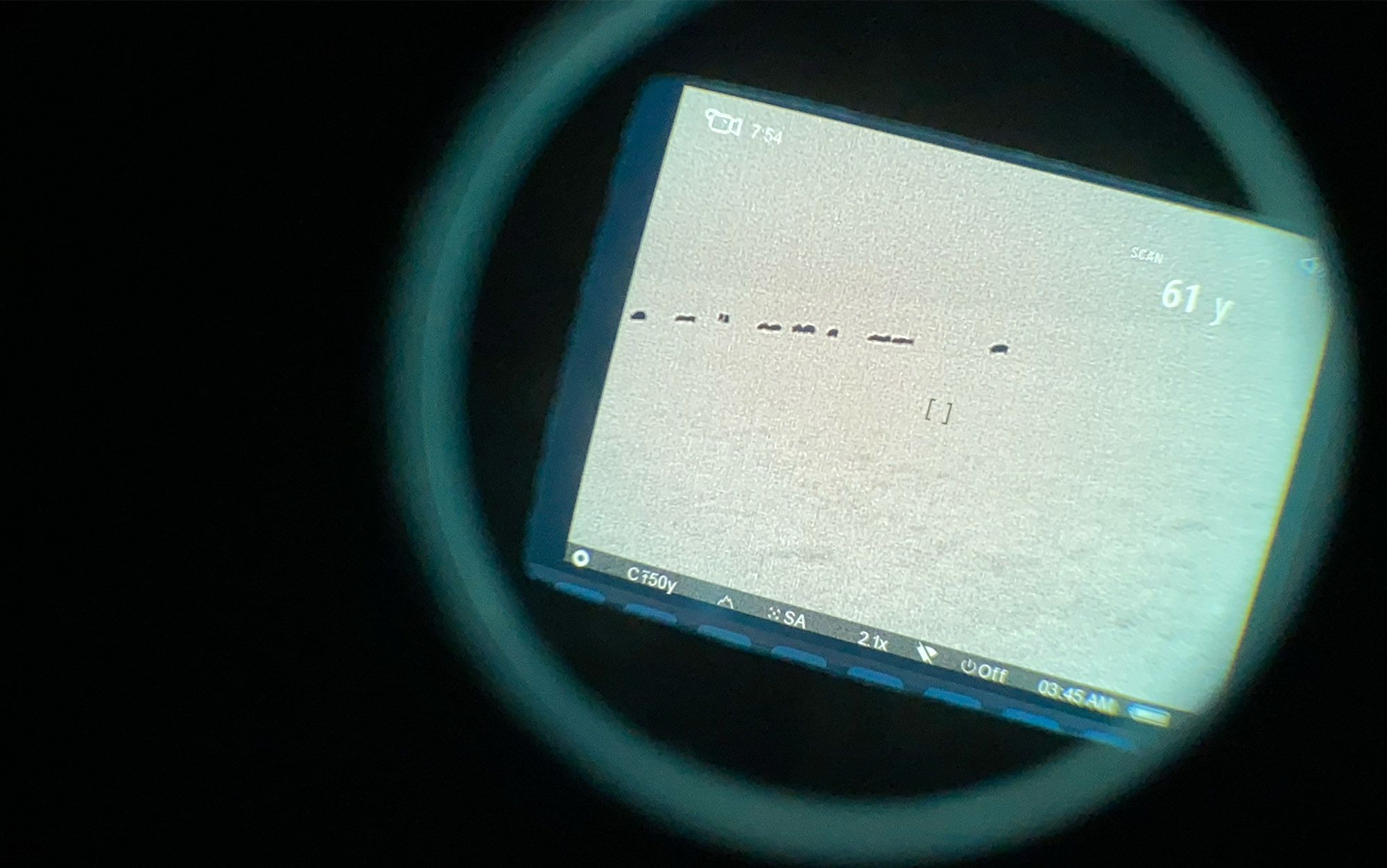
While the unit can detect heat signatures out to 2,000 yards, it only really becomes useful inside about 500 yards, when images start to gain resolution and the rangefinder—rated out to 875 yards—can identify targets quickly and with pretty good precision. The rangefinder has an inclinometer, unusual in this class of scope, and a ballistic calculator that can prescribe shooting solutions. The magnification range—2x out to 16x—is useful, as is the ability to choose between 10 reticles and nine different color modes. For precision shooting, the “picture-in-picture” mode, which magnifies the aiming point, is a useful feature.
The ergonomics and ease of use are both excellent, starting with the ambidextrous focus control on the thermal housing near the objective bell. The three-button control pad near the eyepiece is intuitive and textured to make navigation in total darkness repeatable after a few uses.
In terms of its guts, the Thermion 2 is powered by a 640 x 480 microbolometer resolution sensor and a sharp 1024 x 768 AMOLED display that pops against just about any background.
Let’s talk about its price—over $6,500—and its scarcity. This product hasn’t been available for a few months, and there’s a good deal of uncertainty over sourcing for a number of brands, besides Pulsar. It’s enough to suggest that instead of germanium, the material thermal manufacturers are using might as well be called unobtanium.
While much of the Thermion 2 looks and behaves like a traditional riflescope, the processor that’s mounted above the objective bell is bulky and throws off the balance. The refresh rate is better than earlier iterations of this scope, but I still wish it was a little faster. While using this scope on a Texas hog hunt, I found that it froze at the most inopportune moments, a situation that’s easy to resolve with manual refresh.
Best Budget Monocular: FLIR Scout TK
Key Features
- 100-yard detection range
- Weight: 0.37 pounds
- Seven color palettes
- Records video and takes photos
Pros
- Relatively affordable
- Easily fits in a pocket
- Easy to learn
Cons
- Poor resolution
- Batteries drain easily in cold weather
This isn’t a whiz-bang unit that requires weeks of constant use to become familiar with. Instead, it’s an accessible, reasonably priced thermal monocular that is light and small enough to take just about anywhere, and its operation is relatively straightforward, making it a great entry-level unit. Imagine using it at a campsite to see into the woods, or as an emergency device in your hunting pack, or to find a lost dog on a dark night. It’s that kind of a device, not a precision instrument but rather a handy assistant. At about $650, it’s on the low end of pricing for full-featured thermal units.
The basics are delivered without fuss. There are seven selectable color palettes—black hot, white hot, arctic, lava, plus a rainbow palette that highlights extreme temperature variations to make detection super-fast. FLIR has a mode called Graded FirePOWER that shows detailed gradations, and then the Scout has a mode called Iron that similarly shows temperature gradients. Operation is manipulated by a three-button control panel on top of the unit that is easy to use, and the key buttons have tactile differentiations to make them recognizable in total darkness.
This is not a high-powered unit. Its objective lens is one of the smallest in the field, which limits both its reach and its resolution. Images are grainy and unsatisfyingly vague, and the 640 x 480 LCD display is similarly fuzzy. Its battery drains quickly in cold weather, and users have to select power-shutoff mode in the menu; otherwise, the unit simply stays powered on, further draining the battery. Lastly, recorded images and videos require a USB cord to download.
Best Night Vision Camera: Sionyx Aurora
Key Features
- Digital Zoom Range: 1-3x
- Capable of detecting man-sized target under a quarter moon at 150 meters
- 256GB on-board media storage capacity
- Ships with premium hard-shell case
- Wi-Fi enabled
- Full night-vision capability
- Night-vision, twilight, and daylight capture modes
Pros
- Redords night videos in color
- Durable
Cons
- Limited zoom range
This camera is almost like having an Instagram filter in your hands. Images from the night-vision device make daylight landscapes look like a dreamy, futuristic world. And images at night are enhanced from indistinct to sharp and detailed. The Aurora is small and durable, and almost infinitely mountable, making it a smart choice for surveillance work. Capable of capturing both still images and video, the Aurora shoots 720-scale video at a frame rate of 60 HZ. There’s a bit of flickering to the images, but they can be compressed and shared, transmitted from the camera either via on-board Wi-Fi or downloaded by a cable that ships with the unit.
The camera is also simply fun. It elevates and expands photography by allowing extremely low-light imagery and the ability to capture footage of animals and scenes that have been beyond our sight until now. In extremely low light, starlight or partial moonlight, images have an ethereal quality, tinged with a greenish glow. The Pro version of the camera, which includes a hard case and several mounting options (Picatinny rail mount, traditional tripod plate mount), extra battery, plus an IR illuminator flashlight, runs about $1,000. That’s steep for a hand-held camera, but a bargain when you consider its versatility, seeing into the night and also serving as a capable daylight camera.
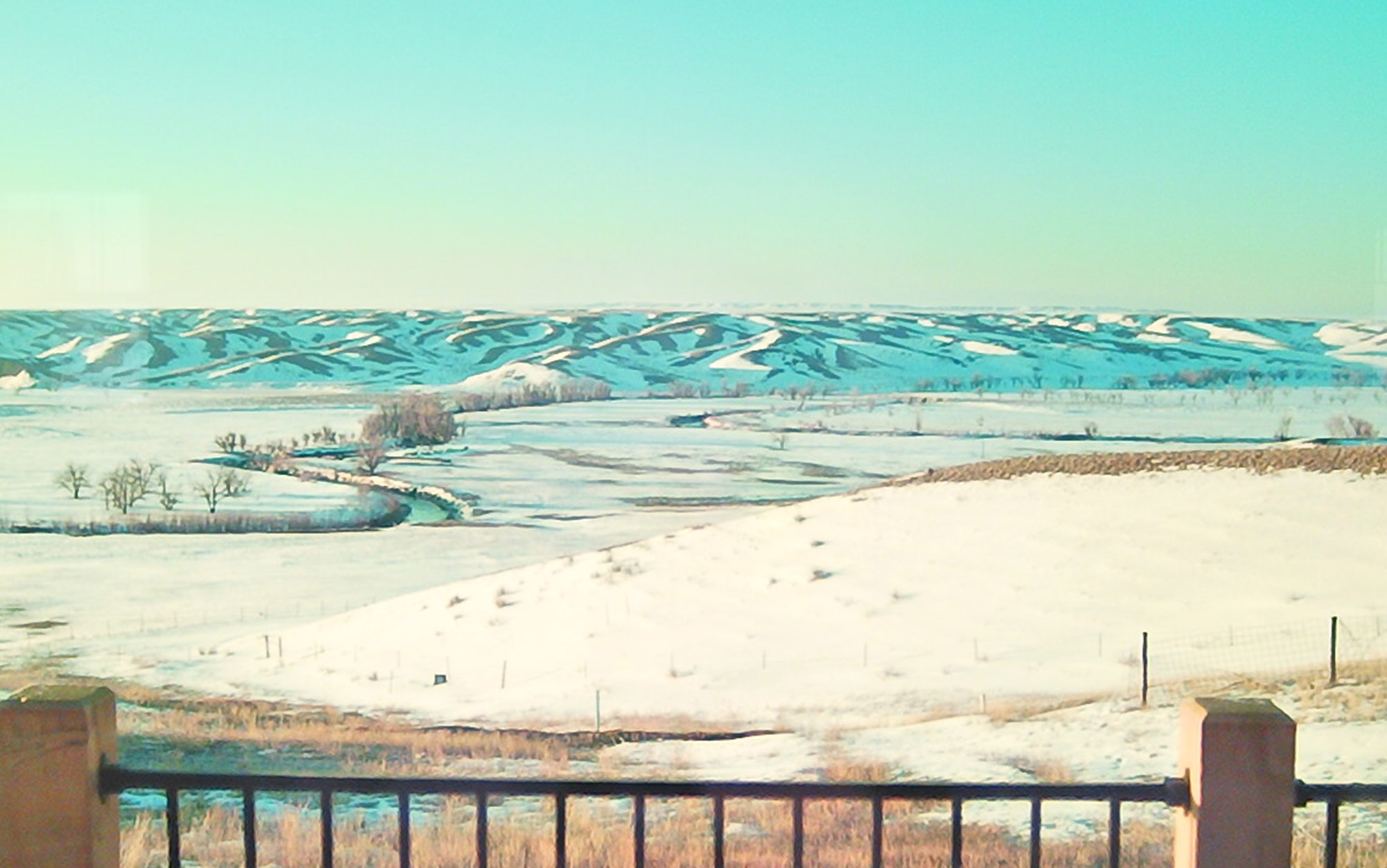
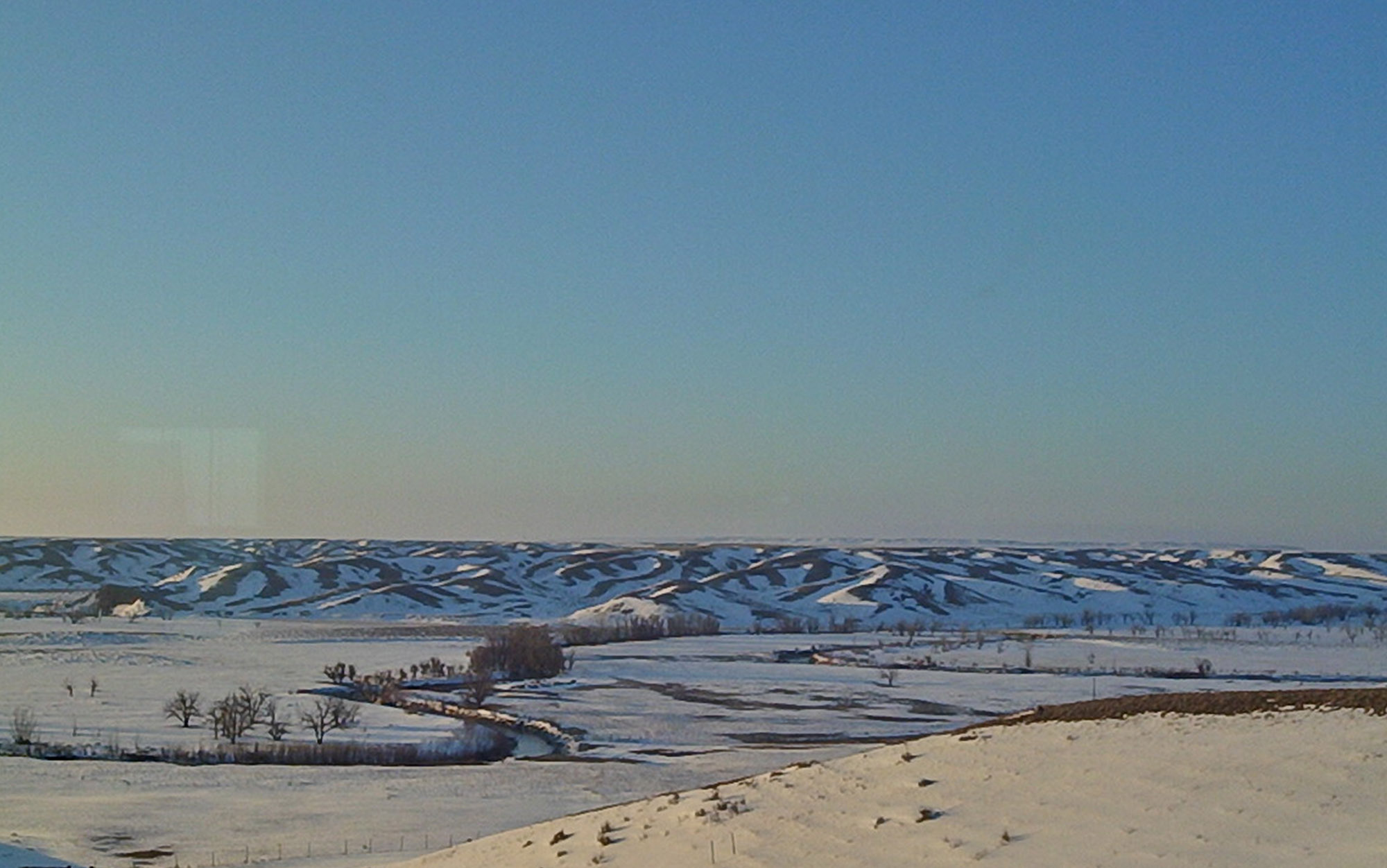
I wish the unit had the ability to change resolution of image captures, and the 1-3-power range is great for taking in wide fields of view, but its zooming ability holds it back from capturing images of distant objects. The Aurora is at its best when mounted to a tripod or other stabilizer. In extremely dim light, vibrations are exaggerated. And despite its extremely capable low-light talents, images are still defined by white noise in the darkest conditions. I’d like to see an auto-focus feature; the manual focus is hard to get tack-sharp in dark conditions.
How to Choose a Thermal Camera
The thermal or night-vision optic that’s right for you will depend on how you’ll use it. Here’s how to decide which thermal camera is going to be the best fit for your needs.
Types of Thermal Optics
If you want a thermal scope that you can use to hunt pigs or coyotes, then I’d recommend a dedicated riflescope. These scopes that cost anywhere from $2,000 to $7,500 feature selectable reticles, on-board photo and video recording, and some even have built-in laser rangefinders.
Maybe you just want to know what goes bump in the night. A simple hand-held thermal is a good choice for detection, and is by far the most cost-effective category of this class of optics. Most have on-board recording, various display modes, and are housed in compact, ergonomic bodies. Expect to pay anywhere from $650 to $2,500 for these units.
Clip-on thermals are the most versatile of the three thermal categories, because they can be used on a shooting platform and also as hand-held viewers. The best cost around $3,000. They generally have photo and video recording, but no magnification and relatively few other attributes.
Features
All these thermal units have different viewing modes. The industry standard has become some variation of these palettes: white hot, black hot, rainbow, and red hot. And most devices have some sort of on-board recording feature, but there’s a wide range of capabilities, including built-in Wi-Fi and Bluetooth that allow users to share images.
As you’re looking over the field, also take note of the imaging capabilities of various devices. Some have extremely rich resolution, thanks to large objective lenses that gather more detail. Others deliver sharp renditions of the image because of high-resolution screens, and still others use more or fewer pixels to influence the image. The best have high scores in each of these three categories; others might compensate for poor resolution with a sharp screen.
Regardless of how they generate the image, the interface between the world and your eye is essentially a tiny television screen, so you’re seeing a digital rendition of reality. That’s wildly different from traditional optics, which magnify images using curved glass but otherwise don’t manipulate the image.
Cost
In terms of cost, you’re mainly paying for two attributes. For thermal units, the first is the heat-sensing lens. It’s made of a special crystal called germanium that, when shaped into a lens, blocks extraneous wavelengths and boosts temperature differentials. And you’re paying for image processing speed and resolution. Each unit has some significant differences that we’ll point out in each of the product reviews.
Night Vision vs. Thermal
Thermal optics detect heat signatures and display them on a digital screen. Night vision can be digital or optical. The main pro of thermal is that they work independent of ambient light and can see animals that you’d never see with night vision or even a flashlight. The cons are that it doesn’t provide vivid detail of objects, just silhouettes.
Night vision amplifies ambient light and it can be enhanced with infrared illuminators. The main con is that you’ll still have shadows and areas you cannot see unless you use a powerful IR illuminator.
If you’re interested in seeing features and textures, then you want to consider night-vision products. They’re useful for navigating, positively identifying targets, and can offer surprisingly rich depth perception and scale.
FAQs
Thermal cameras (and any thermal imaging device, including scopes, clip-on, and hand-held units) use a special lens to detect variations in temperature. Infrared cameras and night-vision devices amplify the available light to create visible images, even in near total darkness.
Thermal cameras start at about $600 and can run well over $1,000. The units at the entry price points typically have limited capabilities. Cameras at the higher end have full video, photography, and even audio recording capabilities, and can transmit media via Wi-Fi and Bluetooth.
Yes, in some cases your phone can be linked to a thermal camera and used to display images taken by the thermal device. Seek Thermal’s Compact series more or less invented this capability with thermal sensors that plug into a phone’s power port. The FLIR One Edge Pro is the best example of this smart-phone compatibility in this particular roundup. The thermal camera doesn’t have a screen or control buttons; instead it streams images to your phone or other connected device, allowing users to capture photos and video and use their phone as a controller for the device.
Final Thoughts
Thermal cameras are an important and exciting new category of “optics,” but they are so varied in terms of their capabilities, field-worthiness, and prices that my goal for this piece wasn’t to exhaustively review each product but talk about that variability and applicability for a range of tasks.
Because the category is so new, there’s still a lot of blind spots about which devices will best serve consumers’ needs. Do you want a dedicated thermal riflescope, or is a clip-on’s versatility a better choice? How useful are hand-held thermal monoculars? And when it comes to cameras, is a night-vision/infrared unit more useful than a thermal device? These are high-dollar items, so getting a good grounding in the capabilities of each platform is a necessary first step to being an informed consumer.
When you’re choosing among the best thermal cameras keep in mind that these are all sophisticated electronics, and you’re going to want to investigate the specific attributes of a prospective purchase. Pay attention to sensor and display resolution, frame rates of video recording, and sensitivity of thermal detection. And inquire about warranties. These are all expensive purchases of relatively fragile devices, and you want to ensure you have solid protection in case of a malfunction.
- Best Overall: Zeiss DTI 3/35
- Best Phone-Connected Thermal: FLIR ONE Edge Pro
- Best Scope for Video: Pulsar Thermion 2 LRF PRO
- Best Budget Monocular: FLIR Scout TK
- Best Night Vision Camera: Sionyx Aurora
